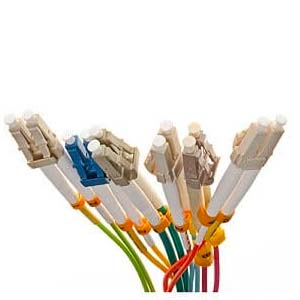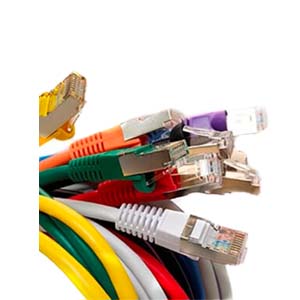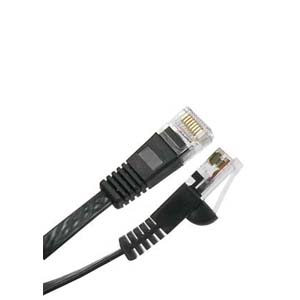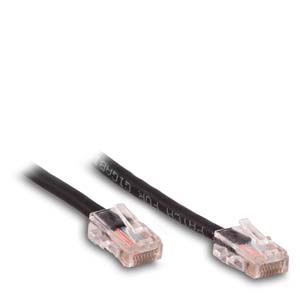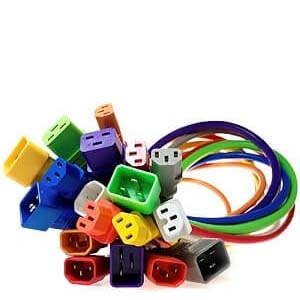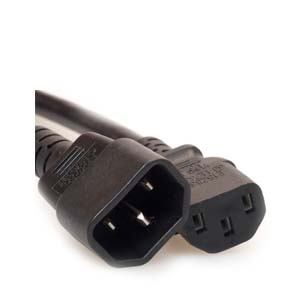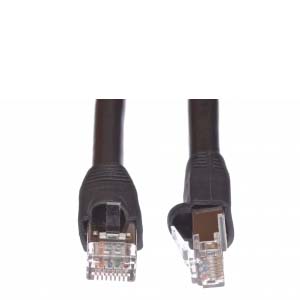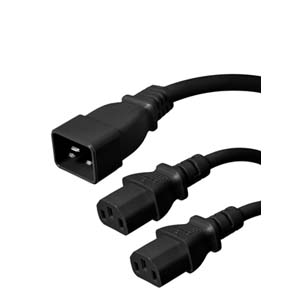Cables Blog
Why an Educational Facility’s Network Infrastructure Matters
Educational facilities maintain physical plants. Along with HVAC, water, sewer, and electric services, network infrastructure matters to student success.
by VIKAS DAYAL • March 11, 2020
Network Patch Cables, Fiber Optic Cables, Cat5e / Cat6 Cables, Cables.com, Online Learning

Schools, colleges, and universities increasingly have created the “chief information officer” or “chief technology officer” position to lead efforts to develop and maintain network infrastructures that support learning, institutional administration, security, and physical plants. With an entire school-age generation that has never been without the internet, social media, or a smartphone, an education facility’s infrastructure matters more than ever.
Beyond Laptops, Tablets, and Phones
Schools, colleges, and universities have embraced online textbooks, course modules, assessments, and testing along with asynchronous learning. They have adopted 1-1 ratios of devices to students. When everyone has a laptop or a tablet connected to the network, demand for bandwidth and speed increases. Moreover, educational networks must ensure that their institution’s network infrastructure can accommodate increasing demand for innovations like augmented and virtual reality applications, game-based learning, and calculations requiring enormous capacity and speed. Educational facilities must also plan for the expansion of “the internet of things,” or IoT.
The advent of 5G telecommunications will have as yet undetermined effect, but assumptions are that 5G will support even more massive computing demands as well as a continued proliferation of mobile and smart devices.
Educational institutions will likely continue to expand their use of cloud-based applications, and the demand for speedy downloads and cloud storage will grow along with that use.
Variety of Stakeholders
Educational networks serve a variety of stakeholders, all with their own needs and concerns:
- Students—Students want fast, reliable wi-fi connections and the bandwidth to run game-based learning applications, download and upload assignments, stream video, and run experiments quickly. They want hassle-free access to learning management systems that facilitate coursework and communication with instructors.
- Faculty—K-12 teachers need access to robust systems to create, present, and store learning materials; to use smart TVs and smart whiteboards; and to communicate remotely with students. At the university level, researchers need a great deal of computing power to run experiments and calculations. They also need access to a reliable network for course and learning management systems, cloud storage, and fast download speeds. Additionally, faculty have security concerns: they must maintain the confidentiality of student information while possibly using a variety of synched devices, from personal phones and laptops to university computers.
- Parents—Parents follow their minor child’s progress through parent portals on learning management systems. They very likely are involved with their adult college student’s finances in some way and appreciate billing and communication systems that facilitate the smooth transfer of funds and well as information about college events and administration.
- Campus Security and Housing—The IoT has come to campus security in the form of smart locks, security cameras, and smart ID cards. Campus and school buses may even be connected. Institutions that offer student housing may have to consider how involved that housing will interact with the internet of things. From smart appliances to HVAC and electrical systems that monitor and regulate themselves to integrated virtual assistants and dorm-based apps that report on maintenance and other issues, campus housing officials also have a stake in an educational facility’s network infrastructure.
From Structured Cabling to Edge Computing
No one expects campus IT teams to predict every innovation that will place new demands on their networks. But it is reasonable to expect that existing and future buildings will use structured cabling systems to manage growth, facilitate flexibility, and accommodate increasing demand. This may involve creating a hybrid system that uses both ethernet cable, like cat6 network cable and its successors, and fiber optic cable, to carry data when copper reaches the limits of its capability.
Although fiber optic cable can carry more signals in both directions on multiple wavelengths, faster networks using fiber optic cable may experience slowdowns with heavy use of cloud services and applications. As large educational institutions use more and more cloud computing, and demand for real-time applications like robotics, video processing, and AI grows, latency is a problem. Data traveling long distances over heavily used pathways, even along fiber-optic cables, may experience delays that affect the desired level of immediate performance for cloud-based applications. As the number of smart devices grows, so does the need for simultaneous data analysis. When thousands of security cameras, manufacturing machines, robots, refrigerators, and even self-driving cars all want to send data at the same time, latency problems multiply, and the cost for the necessary bandwidth explodes.
Enter edge computing. With this setup, a facility located close to the device analyzes data from IoT devices before it transmits it to the cloud. In some setups, the edge computing facility can analyze data and return it to the device without passing data to the cloud at all.
It’s unlikely that small educational institutions and local school districts will ever construct their own edge computing facilities. But they may be able to hire them. Edge computing can lower bandwidth costs and reduce the amount of data that has to travel to the cloud. Unfortunately, it can create its own security concerns. Centralized systems, by their nature, can impose greater security requirements than edge computing facilities can. The number and variety of devices that use an edge computing facility and their varying level of security will be issues that must be addressed before edge computing is widely adopted. But when 5G becomes widespread, adding another huge bump in bandwidth usage, edge computing may have to be the option for faster processing of data that comes from 5G devices.
As with hospitals and large business enterprises, an educational facility’s network infrastructure matters. These institutions create new knowledge, and they have to have robust, reliable networks to do it. From science and engineering labs, libraries to dorms, performance spaces to art studios, every activity of teaching and learning at an educational institution now uses the facility’s network infrastructure in some way. Some combination of hardware, cloud services, and edge computing are likely to power the advancement of knowledge for the foreseeable future. Well-planned networks that anticipate ever-growing demand are necessary to enable this advancement. As 5G pushes forward, fiber optic connections become more available, and the internet of things expands, educational facilities must maintain, upgrade, and expand their networks to accommodate. Students of the future will expect it, researchers will utilize it, and the internet of things will require it.



